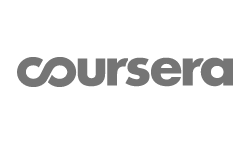본고에서는 한국 고고학의 국가형성 연구의 새로운 방향을 제시하기 위해 유럽 고고학의 연구경향을 중심으로 고대 국가의 형성에 관한 다양한 해석적 접근을 검토하고 있다. 유럽 고고학...
http://chineseinput.net/에서 pinyin(병음)방식으로 중국어를 변환할 수 있습니다.
변환된 중국어를 복사하여 사용하시면 됩니다.
- 中文 을 입력하시려면 zhongwen을 입력하시고 space를누르시면됩니다.
- 北京 을 입력하시려면 beijing을 입력하시고 space를 누르시면 됩니다.

한국 고고학의 고대 국가형성 연구를 위한 일 검토 = New Approaches for the Archaeological Study of Ancient State Formation in Korea: Focusing on Perspectives Provided by European Archaeology
한글로보기https://www.riss.kr/link?id=A100329561
- 저자
- 발행기관
- 학술지명
- 권호사항
-
발행연도
2014
-
작성언어
-
- 주제어
-
KDC
900
-
등재정보
KCI등재
-
자료형태
학술저널
-
수록면
111-144(34쪽)
- 제공처
-
0
상세조회 -
0
다운로드
부가정보
국문 초록 (Abstract)
행되고, 또 어떤 성격의 설명으로 이어지는지를 실제 사례연구를 통해 살펴보고 있다. 이 사례연구들은 유럽 중부지역 켈트족의 국가형성, 청동기시대와 철기시대에 걸친 북부 유럽지역에서의 국가형성, 청동기시대 스페인 남동부 지역에서의 국가형성, 그리고 철기시대 남부 스칸디나비아 지역에서의 국가형성을 다루고 있다. 마지막으로 제V장에서는 이런 유럽 고고학의 논의가 한국 고고학의 고대 국가형성 연구에 시사하는 바를 살펴보고 있다. 특히 국가의 등장을 양적 발달이 아닌 질적 전환으로 접근해야 한다는 점을 강조하고 있으며, 또 유럽의 사례연구들이 가지고 있는 연구 계발적(heuristic) 도구로서의 가능성도 강조하고 있다.
본고에서는 한국 고고학의 국가형성 연구의 새로운 방향을 제시하기 위해 유럽 고고학의 연구경향을 중심으로 고대 국가의 형성에 관한 다양한 해석적 접근을 검토하고 있다. 유럽 고고학에서 진행된 고대 국가형성에 관한 연구는 한국 학계에도 유용한 시사점을 제공할 수 있다. 이는 두 지역에서 고대의 국가가 유사한 환경적, 지정학적 조건 속에서 성장했기 때문이다. 아울러 두 지역의 고고학자들은 사회과학의 시각 보다는 역사학의 시각에서 이 문제를 다루어 왔다. 그간 한국에 소개된 고대 국가형성에 관한 세계 고고학의 연구사례들은 주로 유럽 이외의 지역을 대상으로 한 것들이었기에, 유럽 고고학의 해석적 시각을 다루고 있는 본고의 시도는 한국 고고학의 학문적 저변을 넓히는 데 의미가 있을 것으로 판단된다. 따라서 본고의 제II장에서는 지금까지 한국 고고학에서 고대 국가형성에 관한 논의들이 어떤 방식으로 진행되었는지를 살펴봄으로써 본 연구가 기여할 수 있는 바를 밝히고 있다. 제III장에서는 고대 국가형성 과정을 설명하기 위해 유럽 고고학에서 사용되고 있는 다양한 이론적 틀을 살펴보고 있다.‘사회발전단계론적 국가 모델’,‘국가에 관한 구조주의적-마르크스주의 시각’,‘국가에 관한 정통 마르크스주의 시각’,‘헤테라키적(heterarchical) 국가’가 그것이다. 제IV장에서는 국가에 관한 각각의 이론적 시각을 견지할 때 실제 고고학 자료에 대한 해석이 어떤 방식으로 진
행되고, 또 어떤 성격의 설명으로 이어지는지를 실제 사례연구를 통해 살펴보고 있다. 이 사례연구들은 유럽 중부지역 켈트족의 국가형성, 청동기시대와 철기시대에 걸친 북부 유럽지역에서의 국가형성, 청동기시대 스페인 남동부 지역에서의 국가형성, 그리고 철기시대 남부 스칸디나비아 지역에서의 국가형성을 다루고 있다. 마지막으로 제V장에서는 이런 유럽 고고학의 논의가 한국 고고학의 고대 국가형성 연구에 시사하는 바를 살펴보고 있다. 특히 국가의 등장을 양적 발달이 아닌 질적 전환으로 접근해야 한다는 점을 강조하고 있으며, 또 유럽의 사례연구들이 가지고 있는 연구 계발적(heuristic) 도구로서의 가능성도 강조하고 있다.
다국어 초록 (Multilingual Abstract)
for Korean archaeology is because state formation in the two regions occurred in similar environmental and geopolitical conditions. Therefore, an overview of previous studies on ancient state formation carried out by Korean archaeologists is first undertaken in order to illuminate the potential merits of the current study. Then the various theoretical frameworks that have been used in the study of the state in ancient Europe are considered. They comprise the‘social evolutionary concept of the state’,‘the structural-Marxist concept of the state’,‘the traditional Marxist concept of the state’, and‘the heterarchical state concept’. Following this is an examination of four case studies on ancient state formation in Europe which have adopted, respectively, each of these state concepts. They explore the formation of the Celtic state, state formation in
Iron Age Northern Europe, the Bronze Age Argaric state, and the South Scandinavian heterarchical state. Finally, the potential and limitations of the interpretative approaches adopted in these case studies (which are meant to be used as a heuristic tool by Korean archaeologists) are discussed.
This paper examines the various interpretative approaches that have been used in archaeological studies of ancient state formation in Europe in order to consider new pathways for research on the state in Korean archaeology. The reason that archaeologi...
This paper examines the various interpretative approaches that have been used in archaeological studies of ancient state formation in Europe in order to consider new pathways for research on the state in Korean archaeology. The reason that archaeological research undertaken in the European context can provide new insights
for Korean archaeology is because state formation in the two regions occurred in similar environmental and geopolitical conditions. Therefore, an overview of previous studies on ancient state formation carried out by Korean archaeologists is first undertaken in order to illuminate the potential merits of the current study. Then the various theoretical frameworks that have been used in the study of the state in ancient Europe are considered. They comprise the‘social evolutionary concept of the state’,‘the structural-Marxist concept of the state’,‘the traditional Marxist concept of the state’, and‘the heterarchical state concept’. Following this is an examination of four case studies on ancient state formation in Europe which have adopted, respectively, each of these state concepts. They explore the formation of the Celtic state, state formation in
Iron Age Northern Europe, the Bronze Age Argaric state, and the South Scandinavian heterarchical state. Finally, the potential and limitations of the interpretative approaches adopted in these case studies (which are meant to be used as a heuristic tool by Korean archaeologists) are discussed.
목차 (Table of Contents)
- Ⅰ. 들어가며
- Ⅱ. 한국 고고학의 고대 국가형성 연구
- Ⅲ. 고대 국가형성을 이해하는 이론적 틀 - 유럽 고고학의 경향
- Ⅳ. 고대 국가형성을 설명하는 해석적 접근 - 유럽 고고학의 사례들
- Ⅴ. 고찰
- Ⅰ. 들어가며
- Ⅱ. 한국 고고학의 고대 국가형성 연구
- Ⅲ. 고대 국가형성을 이해하는 이론적 틀 - 유럽 고고학의 경향
- Ⅳ. 고대 국가형성을 설명하는 해석적 접근 - 유럽 고고학의 사례들
- Ⅴ. 고찰
- Ⅵ. 결론
동일학술지(권/호) 다른 논문
-
- 중부고고학회
- 최문환 ( Choi Mun Hwan )
- 2014
- KCI등재
-
- 중부고고학회
- 김용호(Kim, Yong-ho)
- 2014
- KCI등재
-
남해 은병명문와(銀甁銘文瓦) 출토 건물지의 성격에 관한 연구
- 중부고고학회
- 주영민(Joo Young-min)
- 2014
- KCI등재




 KCI
KCI 스콜라
스콜라




